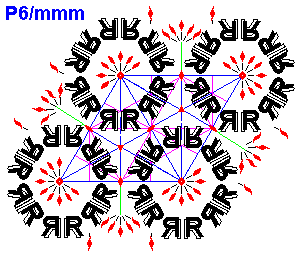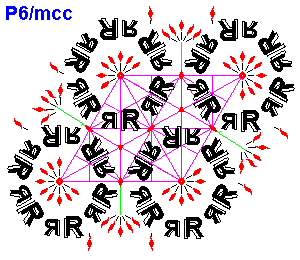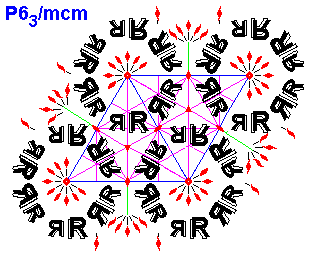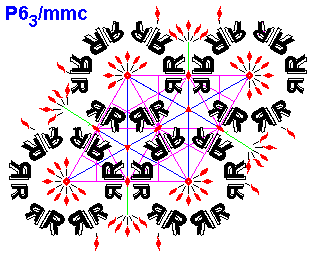Hexagonal (6/m 2/m 2/m) Space Groups
Steven Dutch, Professor Emeritus, Natural and Applied Sciences,
Universityof Wisconsin - Green Bay
To the right of each space group is a listing of coordinate points. These are thecoordinates to which a general point (x,y,z) is transformed by the space group. Origins(called "equivalent points" in the International Tables), areadditional points around which the points are transformed. For example, (0,0,0) refers toa corner of the unit cell, (1/2,1/2,1/2) to the center. All space groups have origin(0,0,0). For a space group with an additional origin (1/2,1/2,1/2), point (x,y,z) is alsotransformed to (1/2+x,1/2+y,1/2+z) and so on.
3-fold and 6-fold coordinates are tabulated with respect to axes intersecting at 60 degrees. In this oblique coordinate system, coordinates tend to be simple
 |
191 P6/mmm (+x, +y, +z); (-y, +x-y,
+z); (+y-x, -x, +z); |
 |
192 P6/mcc (+x, +y, +z); (-y, +x-y,
+z); (+y-x, -x, +z); |
 |
193 P63/mcm (+x,
+y, +z); (-y, +x-y, +z); (+y-x, -x, +z); |
 |
194 P63/mmc (+x,
+y, +z); (-y, +x-y, +z); (+y-x, -x, +z); |
Return to Symmetry Index
Return to 3d-Space Groups Index
Return to Crustal Materials (Mineralogy-petrology)
Index
Return to Professor Dutch's Home Page
Created 13 October 1999, Last Update 11 June 2020